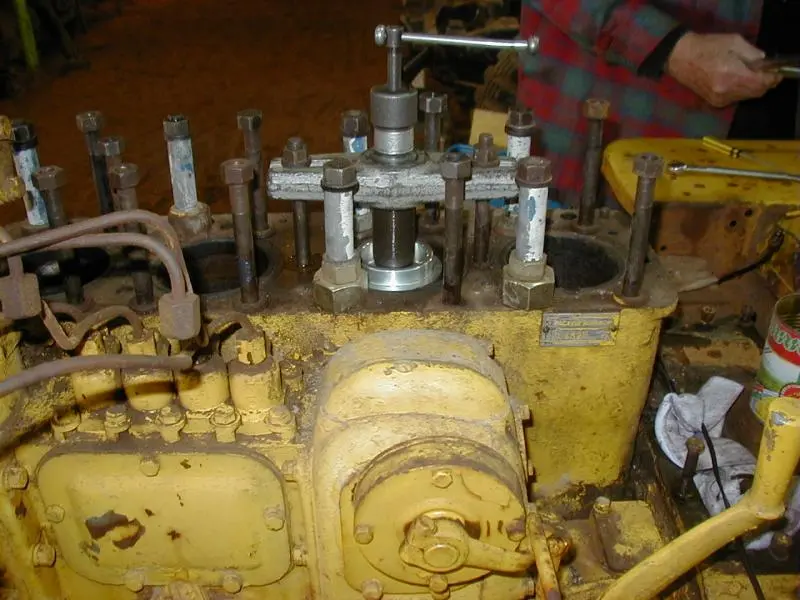On CAT machines, in general, look for a small tag about 1 1/2" tall by 2 1/2" wide held on by a couple of rivets. Could be made of aluminum (most common), plated steel (wartime production), or maybe brass????
Usual places these may be found are on the engine block just below the head gasket line, usually near the pony motor controls and also on the rear of the bevel gear case above the drawbar support on a tractor. Other machines and attachments have different usual places where the same small tag is attached. Frequently if it's missing, the number will be stamped in the iron/steel between the rivet holes. In addition, some engines have the serial number stamped on the block just above the oil pan gasket near the fuel transfer pump.
Older than mid 1930's............. from what I can see, each machine is it's own special case. Ask on here and someone can guide you.
sorry, Im not sure if I said that right. To clarify what I mean, I wanted to know if there was any way to interpret the year/make/and or the options associated with the serial number. for instance would the 14a2267 differ from a 14a6643?
sorry, Im not sure if I said that right. To clarify what I mean, I wanted to know if there was any way to interpret the year/make/and or the options associated with the serial number. for instance would the 14a2267 differ from a 14a6643?
To my knowledge these old Cats only show the year they were manufactured, as in which number off the line they were in whatever year. They are unlike a vehicle's VIN number, where certain letters or numbers throughout the sequence indicate options, displacements, etc.
The only exceptions I can think of include various models of older Cats may have a "W" or an "SP" stamped after the serial number. The "W" meant wide gauge and the "SP" meant special parts were installed during the assembly line process, an example would be transmission gearing options not typically found on standard machines. This practice was abandoned sometime in the 1950's I think, or maybe a little earlier. Also some pre-1930 models were built in both San Leandro and Peoria at the same time, so the serial number prefix would show where it came from. Examples are the gas Thirty where an "S-***" number is a San Leandro built, and a "PS-***" number is a Peoria build. Same applies the the "A" and "PA" Sixty's, and the "L" and "PL" Twenty's.
The serial number info on early units is pretty limited as covered although I would add that some late 50's tractors had transmission group number tags added to the rear serial number tags.
The addition of engine serial numbers, engine arrangement numbers plus vehicle numbers didn't occur until about the early 70's and the advent of sleeve metering fuel injection.


sorry, Im not sure if I said that right. To clarify what I mean, I wanted to know if there was any way to interpret the year/make/and or the options associated with the serial number. for instance would the 14a2267 differ from a 14a6643?
A serial number just gets you a model/series and a number off the line. The later machines, especially engines, may have build codes etc as well as a serial number.
CAT did it like we do cow tattoos. Some folks want a lot of information on their animals, they have a system of letters and numbers so they can tell the birth year etc. All I want is each one to have a permanent, legible, unique number so I can go to a book and look up all that information and more besides.